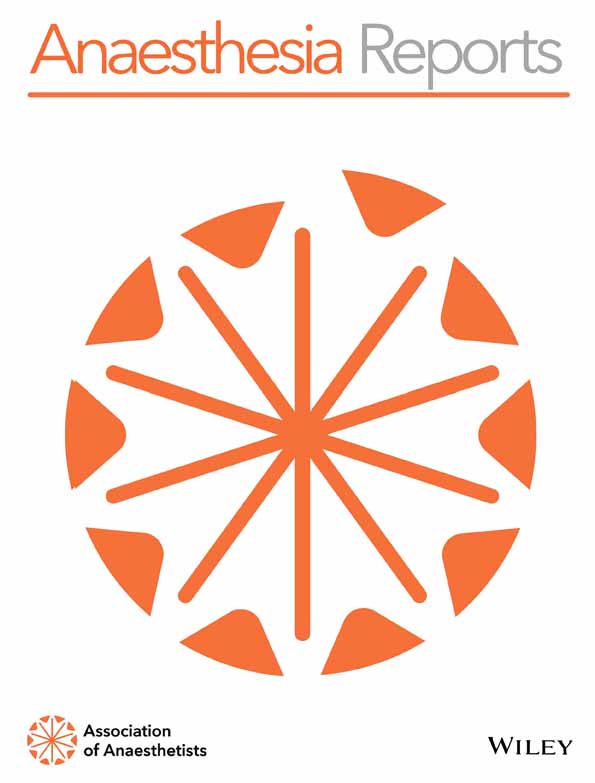Management of iatrogenic bronchial tear during one-lung ventilation for robotic thoracic surgery
1 Department of Anaesthesia, Guy' and St Thomas' NHS Foundation Trust, London, UK
2 Department of Anaesthesia and Intensive Care, Lewisham and Greenwich NHS Trust, London, UK
3 Department of Thoracic Surgery, Guy' and St Thomas' NHS Foundation Trust, London, UK
Summary
Intra-operative airway injuries in robotic thoracic surgery pose unique challenges for the anaesthetist and surgeon. Close communication between the anaesthetic and surgical team is vital in providing adequate one-lung ventilation and a successful operation. We describe a case of intra-operative iatrogenic surgical bronchial tear and subsequent bronchial cuff rupture, requiring immediate specialist anaesthetic management. Management priorities include providing safe oxygenation, ventilation and subsequent lung isolation to allow completion of lung resection.
Introduction
Minimally invasive thoracic surgery has become increasingly popular due to reasons such as reduced postoperative morbidity, reduced pain, shorter hospitalisation and improved recovery of physical function [1]. Furthermore, robotic-assisted thoracic surgery (RATS) offers advantages, such as improved surgical visualisation, dissection into the mediastinum, segmental resection and superior lymph node dissection [2-4]. The added advantage of superior lymph node dissection is significant for oncological staging and treatment. However, aggressive lymph node dissection may increase complications, such as bleeding, bronchial injury, chylothorax and arrhythmias [5]. In addition, minimally invasive robotic thoracic surgeries have their own anaesthetic implications, including deliberate capnothorax, prolonged one-lung ventilation (OLV), difficult access to airway manipulation in the lateral position with the robot docked and management of haemodynamic changes [6].
The incidence of bronchial injuries in RATS is < 1% [7]. Nevertheless, within the last two years at our institution, there have been five cases of bronchial injuries during RATS procedures – three tears on the operative side; and two on the non-operative side. Of the two cases on the non-operative side, we describe a unique case, detailing the anaesthetic challenges which were faced. In this specific case, there was an intra-operative iatrogenic surgical bronchial tear and subsequent cuff rupture, requiring immediate specialist anaesthetic management. This focused on providing safe oxygenation, ventilation and subsequent lung isolation to allow completion of lung resection on the operative side.
Case report
An 81-year-old man underwent a robotic right lower lobectomy and lymph node dissection for a positron emission tomography-avid nodule using the da Vinci X robot (Intuitive Inc, Sunnyvale, USA). His past medical history included hypertension, type two diabetes mellitus, ischaemic heart disease and peripheral vascular disease. His past surgical history included inguinal hernia repairs without any anaesthetic complications. Anaesthetic management of this patient included placement of a 39 Fr Ambu® VivaSight™ 2 double lumen tube (DLT) (ETView Ltd, Misgav, Israel), large-bore intravenous access, a radial arterial line and the patient was placed in the left lateral position.
During the lymph node dissection in the subcarinal space, the membranous wall of the left main bronchus (the non-operative lung) was unintentionally dissected open. Due to the thin appearance of the membranous wall, the bronchial cuff of the DLT was mistaken for a station seven subcarinal lymph node and this resulted in two left main bronchial tears (one close to the carina and another 2 cm distally). There was a transient loss of the capnography trace before a rapid increase in end-tidal CO2 to 13 kPa, as a result of CO2 insufflation affecting the non-operative side. The bronchial tears were immediately identified by the surgical team. A joint decision was made with the thoracic surgeon to attempt robotic stitching to close the bronchus and restore adequate ventilation. Ventilation was transiently restored after the first two stitches during surgical closure. However, a significant anaesthetic circuit leak quickly developed, most likely from the bronchial tree. During systematic troubleshooting, it was noticed that there was a loss of pressure within the pilot cuff of the bronchial lumen. At this point, the surgeon suspected they had stitched the bronchial cuff to the bronchus. This was confirmed by the anaesthetist's inability to mobilise the DLT. The robotic stitches were subsequently removed, the DLT was withdrawn approximately 2 cm and the bronchial defect re-approximated using robot-assisted suturing (4-0 polydioxanone sutures).
To allow completion of the lung resection on the operative side and avoid exchanging the DLT, an Ambu VivaSight™ endobronchial blocker tube (Well Lead Medical Co. Ltd, Guangzhou, People's Republic of China) was placed through the tracheal lumen into the right main bronchus, under continuous visualisation of the airway with the VivaSight™ 2 DLT in situ. This allowed for lung isolation on the operative side and ongoing ventilation without a leak owing to the intact tracheal cuff.
Once OLV was re-established and the bronchial tears were repaired, the surgery was completed without further complications. Intra-operative air leak check with peak pressure 25 cmH2O confirmed no leaks from the airway suture. The patient was extubated successfully at the end of the procedure. Postoperative chest radiograph demonstrated adequate re-expansion of the operative lung and no immediate complications to the non-operative lung. Duty of candour with the patient was fulfilled. He had a postoperative air leak from the chest drain which spontaneously resolved, and the drain was removed on the seventh postoperative day. His recovery was complicated by a mild episode of chest infection, from which he recovered well and was eventually discharged home 8 days postoperatively.
Discussion
Despite the potential benefits of RATS, some of its barriers include lack of high-quality prospective data and cost [3]. This has cascading effects on the evidence present for management of complications during RATS when they arise. Intra-operative airway injuries in RATS pose unique challenges for the anaesthetist and surgeon. Close communication between the anaesthetic and surgical teams are vital in providing adequate OLV and a successful operation. In contrast to video-assisted thoracoscopic procedures, RATS can offer more extensive lymph node dissection [3]. Along with improved visualisation, CO2 insufflation and the shape of the bronchial cuff with its impression created on the membranous wall of the bronchus, this can occasionally be mistaken for a lymph node.
The competing anaesthetic management priorities of this case included loss of adequate OLV to the non-operative lung, provision of adequate operating conditions to repair the bronchial tear, CO2 insufflation into the non-operative lung, prevention of subsequent haemodynamic metabolic sequelae from hypercarbia and access to the patient's airway in the lateral position with the da Vinci X robot docked at the patient's head end. To simultaneously address potential complications following a bronchial tear with a bronchial cuff injury, there also needs to be a structured approach to anaesthetic management. Management considerations are outlined in Table 1.
| Immediate management | Management details |
|---|---|
| Check bronchial cuff integrity |
|
| Ensure adequate positioning of DLT |
|
| Ensure no obstruction of DLT |
|
| Equipment considerations |
|
- DLT, double lumen tube.
The main advantages of inserting an endobronchial blocker and proceeding with robotic suturing in this case include avoiding patient repositioning and undocking of the robot (with the associated time implications of this), reducing airway instrumentation with the potential for airway trauma and swelling and minimising the periods of apnoea and iatrogenic hypercapnia.
Once a bronchial tear has been identified the initial steps of management include delineating whether the integrity of the bronchial cuff has been disrupted, which can be done by checking the pilot cuff of the bronchial DLT and monitoring for any air leaks or ventilation issues. Other steps include checking the positioning of the DLT and ensuring that no blockages have occurred. If the bronchial cuff is still intact, the operation may proceed with surgical repair. If the bronchial cuff has ruptured, further steps will need to be taken to ensure adequate ventilation can occur. Maintaining close communication with the surgical team is important as the surgical repair process may be dynamic and the repair techniques may vary depending on whether adequate ventilation can be achieved (robot-assisted suture versus conversion to open thoracotomy). This will largely depend on surgical experience in robot-assisted suturing and balancing this against the time taken to convert to an open procedure, which is feasible, if adequate gas exchange can be maintained during this time.
From a respiratory perspective, the priorities are ensuring adequate OLV to the dependent lung via an endobronchial blocker or changing the DLT and decreasing intrathoracic CO2 flows and pressures. Changing the DLT may pose its own challenges, due to the time taken to undock the robot and move the patient into the supine position. Changes to ventilator settings include increasing the respiratory rate to offset impending hypercarbia, changing to pressure-control ventilation and reducing PEEP to ensure adequate driving pressure, increasing ventilator flows and avoiding FIO2 1.0 to minimise airway fire risks with diathermy.
The rapid absorption of CO2 may have significant cardiovascular implications. These include respiratory acidosis, development of arrhythmias and increased pulmonary vascular resistance. The increase in pulmonary vascular resistance occurs due to the physical capnothorax pressure and deflation of the dependent lung with resultant right heart strain. Other considerations include maintaining general anaesthesia with processed electroencephalogram monitoring and ensuring adequate analgesia and neuromuscular blockade.
Although bronchial injuries to the dependent lung are rare, they can result in serious complications and present management conundrums for the anaesthetist. Communication with the surgical team remains crucial as these are unique situations which require rapid decision-making to ensure patient safety and surgical success.
Acknowledgements
This case report was published with the consent of the patient. The authors would like to acknowledge the following thoracic surgeons for their expert advice on the management of bronchial tears during robotic thoracic surgeries: Ms Karen Harrison-Phipps, Mr Andrea Bille and Mr Lawrence Okiror. Dr George Christodoulides is a Scientific Advisor for Ambu.





